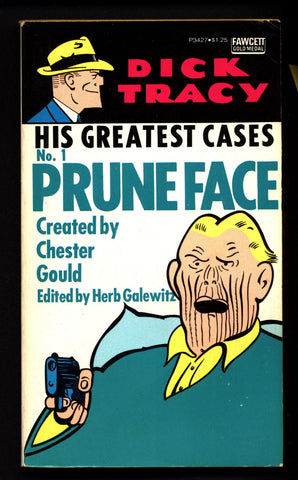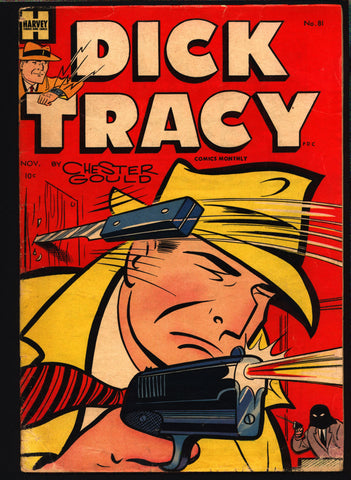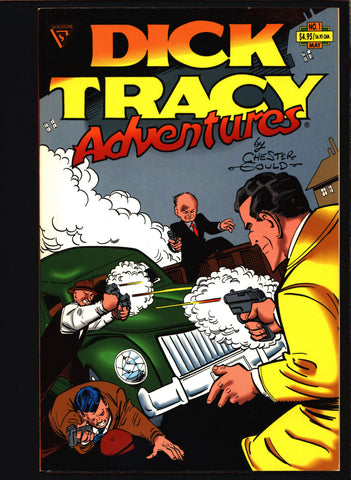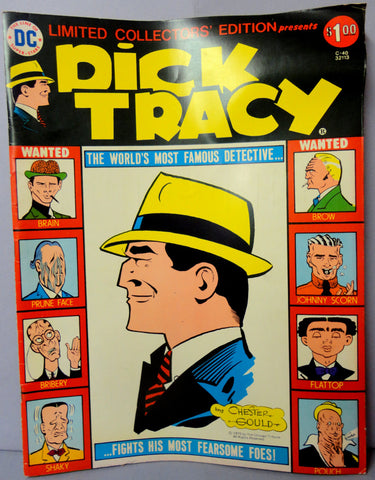RIP KIRBY 14 Gunpowder Dreams Alex Raymond large size B & W reprints March 27-June 10,1950 Pacific Club 1980 Limited Edition
$ 19.99
is on back order
Share this product
RIP KIRBY 14 Gunpowder Dreams ALEX RAYMOND
Publisher: Pacific Comics Club, Long Beach CA, 1980
LIMITED EDITION published for Club Member Collectors and states "Not for Retail Sale"
Large sized softcover reprint 10" X 13 3/4" tall.
Reprinting in large format Black & white serial from March 27-June 10,1950
Condition is very nice is Used - VERY GOOD, Tight, clean copy. Usual softness & minor wear from handling & storage. Refer to image.
---
Rip Kirby is a popular comic strip featuring the adventures of the eponymous lead character, a private detective created by Alex Raymond in 1946. Displaying the talents of more than a dozen writers and illustrators, the strip had a long run, spanning five decades.
After World War II, Raymond did not return to work on any of his previous successful comic strips (Flash Gordon, Jungle Jim, Secret Agent X-9) but instead began work on a new strip in which ex-Marine Rip Kirby returns from WWII and goes to work as a private detective, sometimes accompanied by his girlfriend, fashion model Judith Lynne "Honey" Dorian. Her given name and nickname were borrowed from the names of Raymond's three daughters.
Rip Kirby was based on the suggestion by King Features editor Ward Greene that Raymond try a "detective-type" strip. First published on March 4, 1946, the strip was given a huge promotional boost, even including fully painted promotional art, a rarity in comic strip promotions. The strip enjoyed enormous success, and Raymond received the Reuben Award in 1949.
During Raymond's years on the strip, the stories were initially written by Ward Greene and later, following Greene's death, by Fred Dickenson. Some sequences were also written by Raymond
Alexander Gillespie "Alex" Raymond (October 2, 1909 – September 6, 1956)[2] was an American cartoonist, best known for creating Flash Gordon for King Features in 1934. The strip was subsequently adapted into many other media, from a series of movie serials (1936–1940) to a 1970s television series and a 1980 film.
Raymond's father encouraged his love of drawing from an early age, leading him to become an assistant illustrator in the early 1930s on strips such as Tillie the Toiler and Tim Tyler's Luck. Towards the end of 1933, Raymond created the epic Flash Gordon science-fiction comic strip to compete with the popular Buck Rogers comic strip and, before long, Flash was the more popular strip of the two. Raymond also worked on the jungle adventure saga Jungle Jim and spy adventure Secret Agent X-9 concurrently with Flash, though his increasing workload caused him to leave Secret Agent X-9 to another artist by 1935. He left the strips in 1944 to join the Marines, saw combat in the Pacific Ocean theater in 1945 and was demobilized in 1946. Upon his return from serving during World War II, Raymond created and illustrated the much-heralded Rip Kirby, a private detective comic strip. In 1956, Raymond was killed in a car crash at the age of 46; he was survived by his wife and five children.
He became known as "the artist's artist" and his much-imitated style can be seen on the many strips he illustrated. Raymond worked from live models furnished by Manhattan's Walter Thornton Agency, as indicated in "Modern Jules Verne," a profile of Raymond published in the Dell Four-Color Flash Gordon #10 (1942), showing how Thornton model Patricia Quinn posed as a character in the strip.
Numerous artists have cited Raymond as an inspiration for their work, including Jack Kirby and Bob Kane. George Lucas cited Raymond as a major influence for Star Wars. He was inducted into the Will Eisner Comic Book Hall of Fame in 1996. Maurice Horn stated that Raymond unquestionably possessed "the most versatile talent" of all the comic strip creators. He has also described his style as "precise, clear, and incisive."[5] Carl Barks described Raymond as a man "who could combine craftsmanship with emotions and all the gimmicks that went into a good adventure strip."[6] Raymond's influence on other cartoonists was considerable during his lifetime and did not diminish after his death. [wiki]
---
Please Visit our sister shops for more Quality Collectibles:
https://www.etsy.com/shop/ephemarama
https://www.etsy.com/shop/Neetorama



